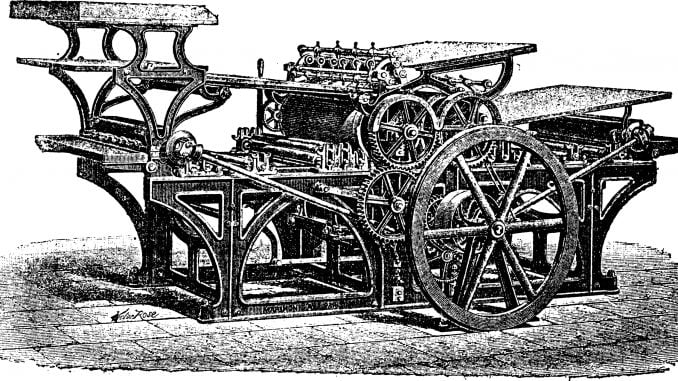
Lately whenever I watch press conferences, I often hear reporters making statements in the form of a question. Sometimes, reporters even become argumentative. Of course, there are the accusations of “fake news” because we’ve come to expect “objective” reporting. When The Associated Press was formed during the 1840s, reporting moved more and more to “objective” reporting. By 1900, that was the expected norm.
During the first hundred years or so of our nation, however, the press was openly partisan. The public expected such commonplace partisanship. It was not always welcomed, however, as evidenced by the lengthy Sedition Bill debate in 1798. Sometimes public officials wanted to limit the freedom of the press. Editors could stymie governmental efforts.
Nathaniel Macon, a leading statesman from North Carolina and U.S. Speaker of the House (1801-1807), subscribed to both Federalist and Republican (a.k.a. Democratic-Republican) papers. He needed to read one, he claimed, to counter the lies in the other and vice versa.
In North Carolina, the press was commonly divided along party lines. New Bern was known to have a press that produced “colorful political conflicts.” In fact, dueling was outlawed in the Old North State after John Stanly killed Richard Dobbs Spaight. The two men had engaged in a vicious war of words in 1802, and both had offended the other’s sense of honor. After four rounds were fired (neither was a marksman), Spaight was fatally wounded. During the War of 1812, New Bern newspapers included the Federal Republican that supported “Madison’s War,” and the True Republican that promoted a Jeffersonian opposition.
In Raleigh, two partisan presses were William Boylan’s Minerva and Joseph Gales’ Raleigh Register. Gales and Boylan did more than use the editorial pages to engage in an ideological war. One day, they met on the street. After a few words that escalated the situation (I’m sure), a fight ensued. Gales sued Boylan for damages and won. Gales donated the amount to the Raleigh Academy.
During the 1830s, many Raleigh papers were admittedly pro-John C. Calhoun or pro-Andrew Jackson. The Raleigh Star was an issue-driven paper, however. The publishers and editors promoted internal improvements (transportation infrastructure) but only by “North Carolina herself.” The national government, they argued, did not have the authority to “interfere with the state government in this way.”
In 1829, William Swaim, the grandfather of the famous author O. Henry, took over the Greensborough Patriot. “The fighting editor” was known as “an erratic genius” who turned the paper into “one of the most unusual newspapers in the South.” Swaim wanted the paper to collect and disseminate facts, but to do so in “favor of public education, the encouragement of Manufactures in the Southern States, … and a total overthrow of that system of electioneering which has disgraced the character of our country.” He advocated for the gradual emancipation of slaves, and he fought against laws restricting what was deemed “incendiary publications.” Readers sent him threatening letters, and he published them for all to read.
The Western Carolinian started in Salisbury in 1820. An influential paper, its editors advocated for a new state constitution (an 1835 convention drastically revised the 1776 document), and they unsurprisingly promoted the interests of western North Carolina. The paper later opposed Jackson during the nullification crisis. Meanwhile, the editors of the Carolina Watchman endorsed Jackson’s actions and pledged to oppose the “newly propagated doctrine of nullification.”
A study of the newspapers in early North Carolina reveals that partisan presses abounded. Larger towns such as Wilmington and Fayetteville had them. Even villages such as Blakely in Montgomery County and Milton in Caswell County had a partisan press.
A return to an admittedly and identifiably partisan press might not be a bad idea. At least, Americans would know what they are getting.



